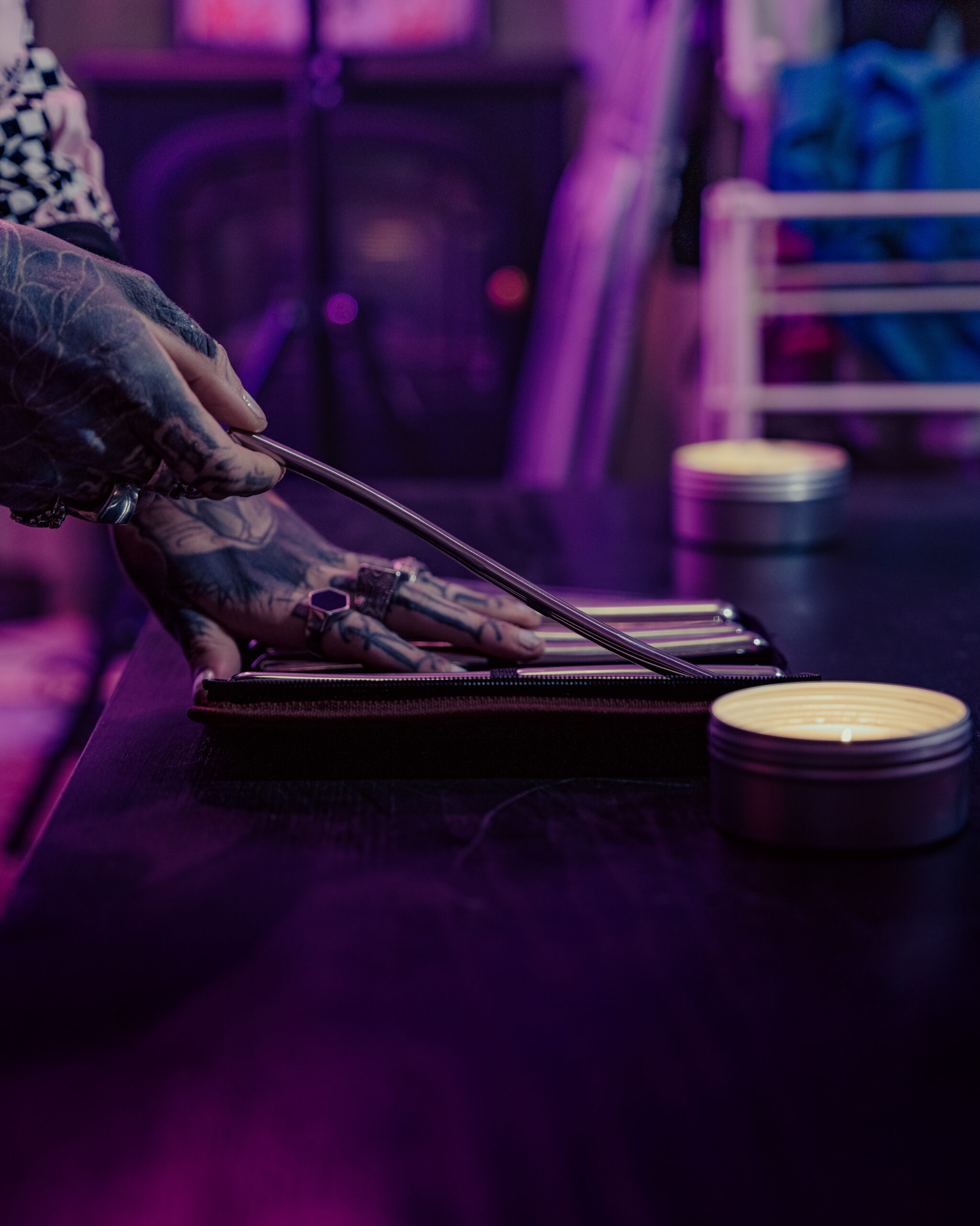Body Inflation Fetish: Unpacking The Appeal Of Size And Expansion
Definition and Prevalence
The concept of body inflation, or the fetishization of size and expansion, has gained significant attention in recent years. At its core, this phenomenon revolves around an intense attraction to large bodies, often accompanied by a desire for physical expansion, either through clothing, prosthetics, or other means.
Despite its relatively new emergence as a distinct area of study, body inflation has been present in various forms throughout history and across cultures. The prevalence of body inflation can be observed in art, literature, and popular media, where exaggerated representations of size and expansion are often used to convey themes of power, sensuality, and desire.
From the opulent clothing worn by 19th-century aristocrats to the modern-day use of padding and prosthetics in fashion and performance art, body inflation has become a ubiquitous aspect of Western cultural expression. However, this phenomenon is not without its complexities, and a deeper exploration of its underlying psychological and social dynamics is essential for a nuanced understanding of its appeal.
A Definition of Body Inflation Fetishism
Body inflation fetishism refers to a sexual fixation on the idea of body expansion, where individuals become aroused by the concept of growing or increasing in size, often in relation to their own bodies or those of others. This fascination can manifest in various ways, such as a desire for larger breasts, buttocks, or thighs, or an interest in scenarios involving size increase, like stretching or inflation.

The prevalence of body inflation fetishism is difficult to quantify due to its often-hidden nature and the stigma surrounding certain fetishes. However, it is estimated that approximately 1% of the general population identifies as having a fetish for body inflation, with some studies suggesting that this figure may be higher in specific populations, such as those involved in the adult entertainment industry.
Body inflation fetishism can be attributed to various factors, including societal beauty standards, cultural norms, and individual experiences. The desire for size increase may stem from a perception of imperfection or inadequacy, with individuals seeking to alleviate feelings of insecurity by fantasizing about expanded features. Additionally, the thrill of exploring unusual or taboo desires can contribute to the appeal of body inflation fetishism.
It is essential to acknowledge that body inflation fetishism, like other fetishes, should be respected and not stigmatized. Education and open discussion are crucial in promoting a better understanding of this complex topic, as well as reducing unnecessary fear or judgment surrounding it. By exploring the underlying motivations and desires behind body inflation fetishism, we can work towards creating a more inclusive environment where individuals feel comfortable expressing their unique interests.
Types of Body Inflation
Bodily inflation fetish is a psychological phenomenon where individuals derive sexual arousal or satisfaction from the expansion or growth of their bodies, often accompanied by a sense of discomfort or pain.
The prevalence of body inflation fetish varies across different populations and cultures, making it challenging to determine an exact figure. However, studies suggest that approximately 1-5% of the general population may exhibit some form of body inflation fantasy or behavior. In online forums and communities, where anonymity allows individuals to share their desires without fear of judgment, reports of body inflation fantasies are more prevalent, with estimates ranging from 10-30%.
There are several types of body inflation, each with its distinct characteristics:
- Body stretching: Involves the desire to elongate one’s body parts, such as limbs or torso.
- Chest expansion: Focuses on the enlargement of breast size or the growth of a larger chest.
- Weight gain: Concerned with increasing overall weight or accumulating excess fat.
- Fat hypertrophy: Involves the desire to accumulate excess fat in specific areas of the body, such as the buttocks or thighs.
These categories often overlap, and individuals may experience multiple types of body inflation simultaneously. Understanding the different forms of body inflation can provide insights into the psychological and cultural factors driving this fetish.
Psychological Factors
The relationship between psychological factors and human behavior is complex, and language plays a significant role in shaping our perceptions and desires. One such phenomenon that has garnered attention in recent years is the body inflation fetish, where individuals become drawn to larger-than-life figures, both literally and metaphorically. This fascination with size and expansion raises questions about the underlying psychological factors that drive this appeal.
The Role of Escapism and Fantasy

The concept of body inflation fetishism revolves around a peculiar fascination with physical expansion, often manifesting as a desire for increased size or weight. This unusual attraction has led many to explore the underlying psychological factors that contribute to such an appeal.
One key aspect to consider is the role of escapism in fantasies surrounding body inflation. For some individuals, this fetish serves as a means of temporarily escaping the pressures and stresses of everyday life. By idealizing exaggerated physical proportions, they can momentarily transcend their own bodily limitations and experience a sense of freedom or empowerment.
Fantasy plays a significant part in this phenomenon. The notion of being able to expand or increase one’s size can be seen as a form of fantasy resolution, allowing individuals to explore and satisfy desires that may not be feasible in reality. This escapism can also provide an outlet for exploring themes related to power, control, and self-discovery.
Moreover, the appeal of body inflation fetishism can be linked to the concept of transference, where one’s emotions, thoughts, or experiences are redirected from a person to an object or an idealized state. In this case, the focus shifts from a human relationship to a symbolic representation of physical expansion, allowing individuals to explore and satisfy desires without the complexities and constraints associated with real-world relationships.
Additionally, some researchers suggest that body inflation fetishism may be linked to feelings of insecurity, inadequacy, or low self-esteem. By idealizing exaggerated physical proportions, individuals can momentarily compensate for these feelings, reasserting a sense of control and agency over their bodies and lives.

Another potential explanation lies in the realm of cognitive psychology, where body inflation fetishism may be seen as a form of cognitive dissonance reduction. By engaging with fantasies surrounding physical expansion, individuals can momentarily reconcile conflicting desires or emotions related to their own bodies, allowing them to maintain a sense of psychological equilibrium.
Ultimately, understanding the appeal of body inflation fetishism requires a nuanced examination of both psychological and social factors. By exploring the various ways in which this phenomenon intersects with escapism, fantasy, transference, insecurity, and cognitive dissonance reduction, researchers can gain a deeper insight into the complex motivations underlying such desires.
The Desire for Control
The human desire for control can manifest in various ways, often stemming from deep-seated psychological needs and insecurities. One such manifestation is the body inflation fetish, where individuals experience a strong appeal towards size and expansion, particularly when it comes to their own bodies or those of others.
This phenomenon can be attributed to several psychological factors. For instance, the need for control and a sense of empowerment may lead some individuals to idealize larger bodies as a symbol of strength, power, and dominance. On the other hand, smaller body types may evoke feelings of vulnerability, weakness, or even shame, prompting individuals to seek out larger counterparts as a means of coping with these insecurities.
Furthermore, societal pressures and cultural norms can also contribute to the appeal of body inflation. The perpetuation of unrealistic beauty standards, often perpetuated through media and advertising, can create an environment where smaller bodies are seen as undesirable or unacceptable. This can lead some individuals to seek out larger bodies as a means of rebellion against these imposed standards.
Additionally, psychological factors such as low self-esteem, anxiety, and attachment issues may also play a role in the appeal of body inflation. In some cases, individuals may use larger bodies as a way to compensate for feelings of inadequacy or to regain a sense of control over their own bodies.
Societal and Cultural Factors
The world of fetish culture is vast and complex, with various forms of desire and fascination existing alongside one another. One phenomenon that has gained significant attention in recent years is the body inflation fetish, where individuals find intense attraction to bodies that are oversized, expanded, or artificially augmented. This article aims to delve into the societal and cultural factors that contribute to the appeal of size and expansion in this fetish, examining how historical, psychological, and social contexts shape our perceptions and desires.
The Influence of Media and Pop Culture
The notion that some individuals are fascinated by bodies that have expanded or become larger has been a subject of interest for researchers and psychologists in recent years.
One aspect to consider when examining this phenomenon is the cultural significance placed on physical attributes. In many societies, there is an emphasis on achieving and maintaining a certain body type, often defined as slender or toned. This can lead individuals to idealize larger bodies or those that have undergone significant changes, such as pregnancy or weight gain.
The media also plays a crucial role in shaping our perceptions of beauty and size. Advertisements, films, and television shows frequently feature models with curvaceous figures or actresses who undergo dramatic transformations for the sake of their roles. These depictions can reinforce the idea that larger bodies are desirable or exotic, contributing to the appeal of body inflation fetishes.
Pop culture also has a significant impact on our understanding of size and expansion. The rise of social media platforms has given birth to a new generation of influencers who proudly showcase their expanded physiques, often in a context that emphasizes the beauty and strength associated with larger bodies. This can create a sense of community among individuals who share similar interests, further fueling the appeal of body inflation fetishes.
Additionally, societal factors such as the normalization of plus-sized models and celebrities embracing their size can contribute to the growing acceptance of larger bodies. The increasing visibility of diverse body types in mainstream media can help challenge traditional beauty standards and promote a more inclusive understanding of attractiveness.

The Intersection with Other Fetishes
Societal and cultural factors play a significant role in shaping an individual’s interest in body inflation fetishism. For instance, our culture often glorifies larger sizes in certain contexts, such as in fashion or sports, where bigger is seen as more desirable or impressive. This can lead to a fascination with expansion and growth, which can manifest in the form of body inflation fetishes.
Additionally, cultural norms around beauty, particularly among women, can contribute to the appeal of larger body sizes. The objectification of women’s bodies, where they are reduced to their physical appearance, can perpetuate unrealistic beauty standards that emphasize curvaceousness and fullness. As a result, some individuals may find themselves drawn to the idea of inflating or expanding their own bodies as a way to experience a sense of empowerment or self-expression.
Furthermore, the intersection with other fetishes, such as sizeism, weight fetishism, or stretching, can also influence an individual’s interest in body inflation. For example, someone who identifies as a size enthusiast may find the idea of expanding their body to accommodate larger clothing sizes appealing. Similarly, those who enjoy weight-related fetishes may be attracted to the sensation of feeling heavier or more substantial.
It is essential to note that these cultural and societal factors can vary greatly across different regions and communities, and not all individuals will identify with these dynamics. However, by examining the intersection of body inflation fetishism with other fetishes and cultural norms, we can gain a deeper understanding of the complex psychological and social underpinnings of this fascination.
Risk Factors and Concerns
Body inflation fetish, also known as macrophilia or body expansion fetish, refers to a unique and complex form of sexual arousal centered around the theme of bodily enlargement and transformation. This fascination with size and expansion can manifest in various ways, from fantasies about being physically altered to desires for objects or individuals that embody an inflated or distorted physical presence. Despite its relatively niche nature, body inflation fetish has gained significant attention within the context of sexology and kink communities, raising important questions about the psychological, sociological, and cultural factors underlying this specific aspect of human desire.
Physical Health Risks
The concept of body inflation fetish, also known as macrophilia or size fetishism, revolves around an intense sexual attraction to larger-than-average body parts or overall bodily expansion. This fascination with size can manifest in various ways, including a desire for physical enlargement, such as weight gain, breast enhancement, or the use of prosthetics and padding. While it may seem unusual, understanding the underlying risks and concerns associated with this fetish can provide valuable insight into its appeal.
Physical health risks associated with body inflation fetish include a range of potential complications. For individuals who engage in weight gain as part of their fetish, there is an increased risk of developing obesity-related health issues, such as diabetes, high blood pressure, and cardiovascular disease. Moreover, the use of prosthetics, padding, or other devices to achieve bodily expansion can lead to skin irritation, allergic reactions, and even infections.
Another concern surrounding body inflation fetish is the potential impact on mental health. The pressure to maintain a larger-than-average size can create unrealistic expectations and promote an unhealthy body image. This can lead to feelings of anxiety, low self-esteem, and depression, particularly if individuals feel they are unable to achieve or sustain their desired level of expansion.
Furthermore, the fetishization of bodily expansion can also raise concerns around consent and power dynamics. Individuals who engage in this type of fetish may feel pressure to conform to societal standards of beauty, leading to feelings of coercion or compulsion. This can be particularly problematic in relationships where one partner is more invested in the fetish than the other.
It is essential for individuals exploring body inflation fetishism to prioritize their physical and mental health. This may involve seeking guidance from qualified healthcare professionals, engaging in open and honest communication with partners, and cultivating a positive and accepting relationship with oneself.
Mental Health Implications
The concept of body inflation, where individuals derive sexual arousal or satisfaction from the expansion of their own body parts, can be a complex and multifaceted phenomenon. At its core, this fetish involves the exploration of themes related to size, power, control, and self-empowerment.
Research suggests that individuals who engage with body inflation fantasies may have certain psychological characteristics, such as a desire for dominance or control over their own bodies. This can be linked to broader societal issues, including body image concerns and the objectification of the human form. Additionally, the appeal of size expansion may also be tied to experiences of trauma, anxiety, or feelings of vulnerability.
Mental health implications surrounding body inflation should not be overlooked. For some individuals, exploring these fantasies can lead to increased self-awareness, confidence, and emotional regulation. However, for others, this fascination may serve as a coping mechanism for underlying psychological distress or contribute to unhealthy attachment patterns.
Furthermore, the intersection of technology and body inflation has given rise to new concerns, including the potential for online exploitation, objectification, and the blurring of boundaries between fantasy and reality. As societal attitudes towards sex and relationships continue to evolve, it is essential to prioritize open dialogue, education, and empathy when exploring these complex and often stigmatized topics.
Ultimately, understanding the appeal of body inflation requires a nuanced examination of the psychological, social, and cultural factors that contribute to this phenomenon. By acknowledging both the potential benefits and drawbacks associated with body inflation, we can work towards fostering a more informed and compassionate conversation about human desires and relationships.
Buy vibrating eggs at Peaches and Screams Browse sexy clothing at Peaches and Screams Explore erotic body massage oils for sensual relaxation at Peaches and Screams Shop male edge devices for enhanced pleasure at Peaches and Screams Buy Mojo products for exciting and powerful pleasure at Peaches and Screams Find male sex toys at Peaches and Screams Buy strap-on dildos for unforgettable experiences at Peaches and Screams
Create Cocktails at Home The CBD Consultancy The New Cinema Magazine Fashionably Balanced Lottie London Aesthetics
- Why Do Men Watch Porn When They’re In Relationships? - June 24, 2025
- What To Expect After A Tear Trough Filler Procedure In Kingston Upon Thames - June 23, 2025
- What Is Benching And How To Avoid Being Put On Hold - June 20, 2025

